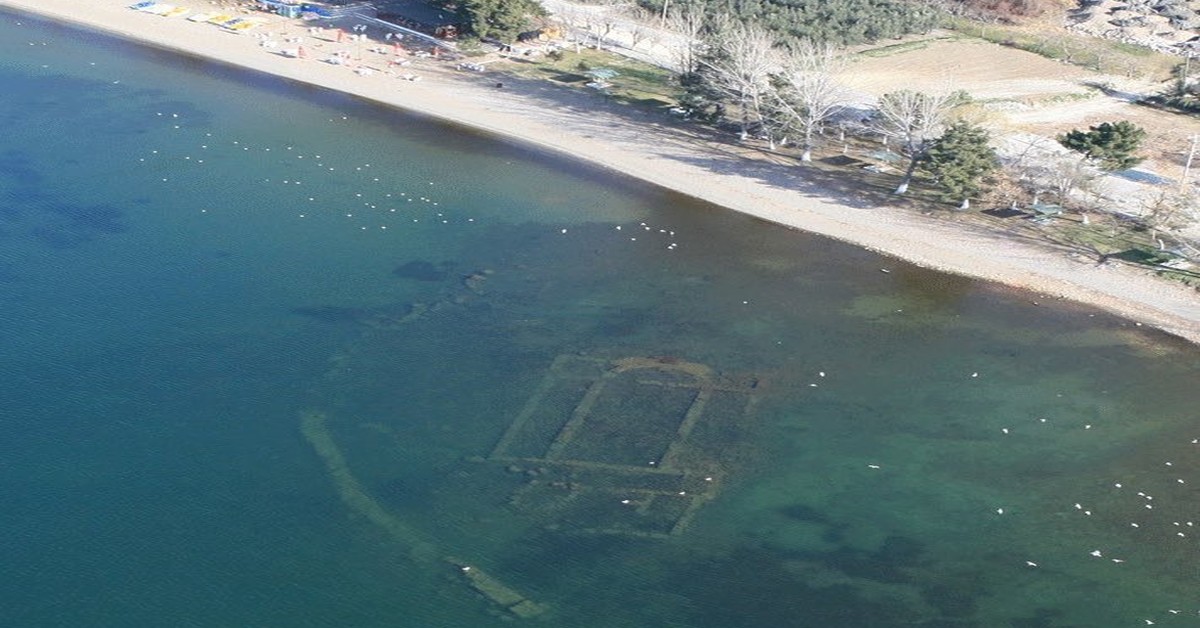For hundreds of years, the ruins of this 5th-century basilica lurked unnoticed under the waters of Lake Iznik just off the shore of the ancient city of Nicaea. Then, one day, they were spotted during an aerial survey.

Just 100 miles off Istanbul, the ancient city of Nicaea on the shores of Turkey’s Lake Iznik is by no means remote or unknown. So when a routine aerial survey of the lake revealed the remains of a 5th-century basilica, archaeologist Mustafa Sahin, the head of the Archaeology Department at Bursa Uludag University, was shocked, to say the least.
“I did not believe my eyes when I saw it under the helicopter,” Sahin recalled. “I thought to myself, ‘How did nobody notice these ruins before?’”
Upon analyzing the photographs, Sahin concluded that the ruins were possibly the remnants of a temple of Apollon, with a basilica-type church built over it in the 5th century.
Sahin is now the main consultant for the basilica excavation, and according to the data they have so far, the structure was initially built in the 2nd century. “But the most important detail is the basilica built in 5th century CE over it,” he says. There are layers of history present in the structure, he adds.

During their underwater dig, the team was able to learn a lot about the early Christian church, which lies six to 10 feet underwater and 165 feet offshore. Not only did they manage to date the basilica to the late-4th/early-5th century CE, but they also found it was most likely built over a pre-existing structure, which was common practice at the time, and would explain why the floor was originally situated 1.6 feet lower than the walls.
The team found no evidence of mosaic or stone floors, which means the existing structure probably had an earthen or wooden floor. The researchers also found several graves on site, with skeletons of several young children and a middle-aged adult.

The place was probably a common burial site at the time, due to the church’s close connection with St. Neophytos, a Christian saint martyred in Nicea when he refused to make a sacrifice to the pagan gods when so ordered by the governor. The basilica, which was constructed outside of the city walls, is believed to sit on the site his grave, and it was not unusual for worshippers to want their graves close to that of a saint.
As archeologists are working on the site, they’re hoping to unravel another mystery. Sahin believes that the building the church sits upon may be a pagan temple dedicated to Apollo. According to ancient records, the Roman emperor Commodus built this temple in Nicea just outside the city walls. During the excavations, the researchers have found coins and fragments of ancient lamps that would date properly with the construction of the temple of Apollo.

While the project progresses, there are plans to transform the site into an underwater archeological museum to give the public the chance to view this sunken wonder. Let’s hope it will be completed soon.
Sources: 1, 2, 3
